If ten different people asked me which place they should not omit from their Budapest itinerary, I would give each of them the same answer: Dohány Street Synagogue. Also known as the Great Synagogue of Budapest, it was easily the highlight of my most recent visit to Budapest.
Budapest Great Synagogue is an architectural marvel, a beacon of cultural heritage and a testament to the enduring spirit of the city’s Jewish people. It’s a must-see even if you have only a passing interest in architecture or history.
Ready to find out more? Discover why this is such an important cultural site, what to expect when you visit and how to do it.

Some articles on this website contain affiliate links. This means that I may earn a small commission if you make a purchase through these links. As an Amazon Associate, I earn from qualifying purchases. Read the full disclosure here.
A brief history of the largest synagogue in Europe
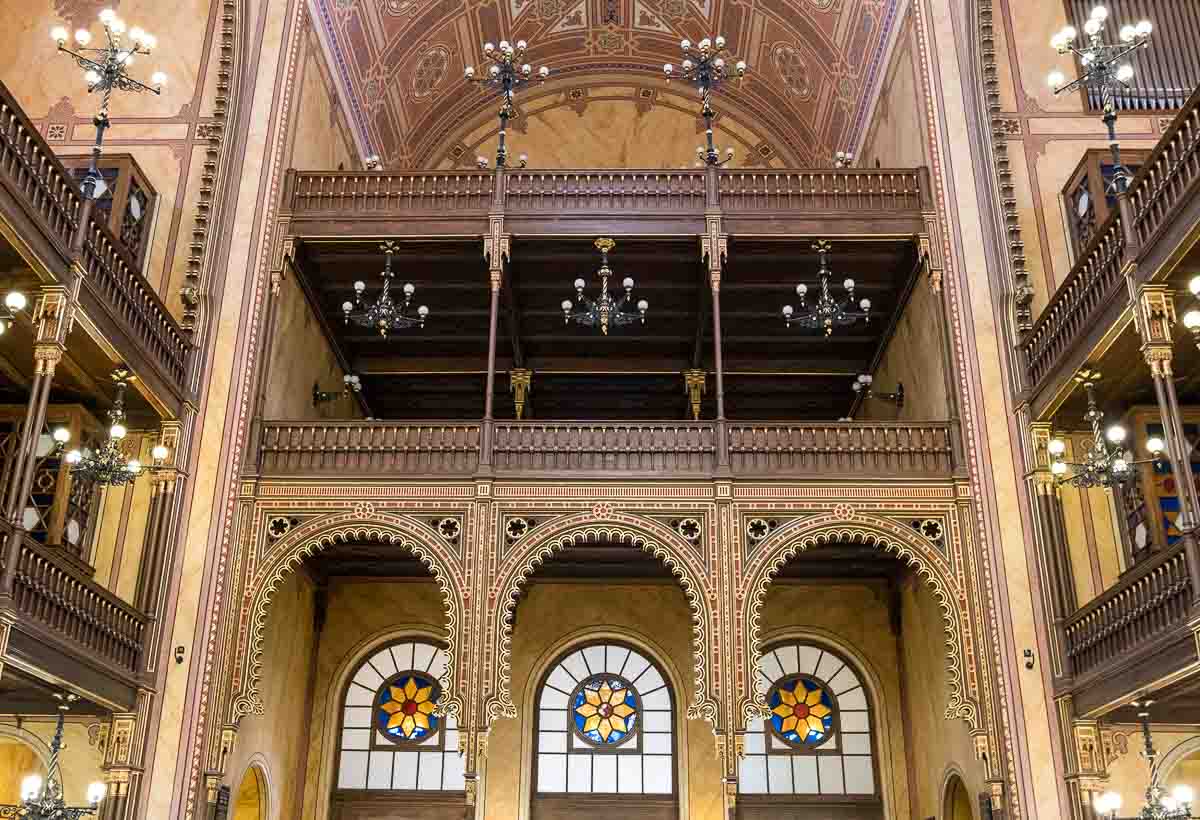
This extraordinary house of worship was designed by Ludwig Förster, an Austrian Gentile architect, and consecrated in 1859. The synagogue’s opulence speaks volumes about the affluence of Budapest’s thriving Jewish population at this time.
World War II was not kind to Budapest Great Synagogue. It was bombed by the Hungarian pro-Nazi Arrow Cross Party in 1939 and suffered severe damage from aerial bombing raids during the Nazi Occupation.
The Communist era saw the synagogue once again become a house of prayer for the much-diminished Jewish community. An extensive restoration and renovation programme was completed in 1998, partly funded by the actor Tony Curtis, the son of Hungarian Jewish immigrants.
The unique architecture of the Great Synagogue in Budapest is the result of a Christian architect inspired by Islamic buildings
Inspired by the Mosque-Cathedral in Cordoba, Spain and the Alhambra Palace in Granada, Förster’s Jewish temple is the epitome of the so-called Byzantine-Moorish architectural style popular in the 1850s.
Inside and out, there are Oriental-Byzantine decorations, including eight-pointed stars covering the synagogue’s exterior and on its floor tiles. Its gilded onion-domed towers reminded me of Eastern Orthodox churches.
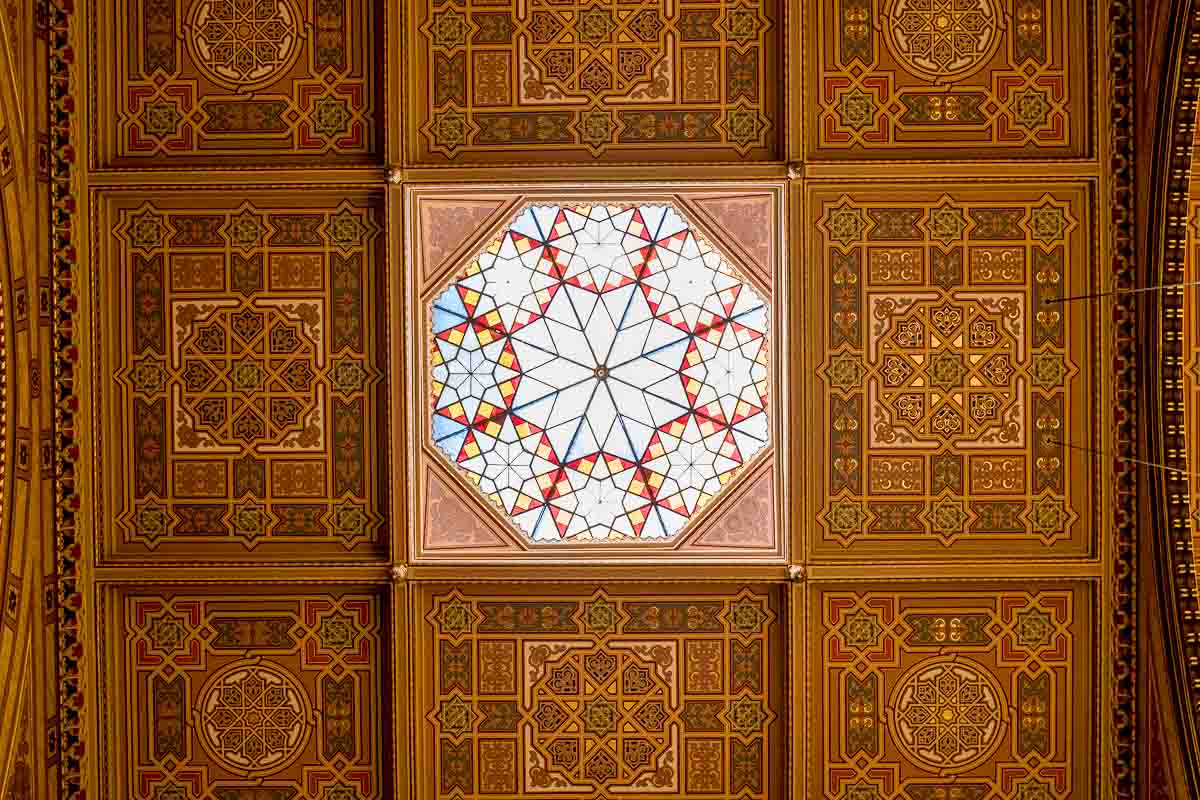
I loved the shafts of light streaming through the synagogue’s windows’ blue and amber glass.
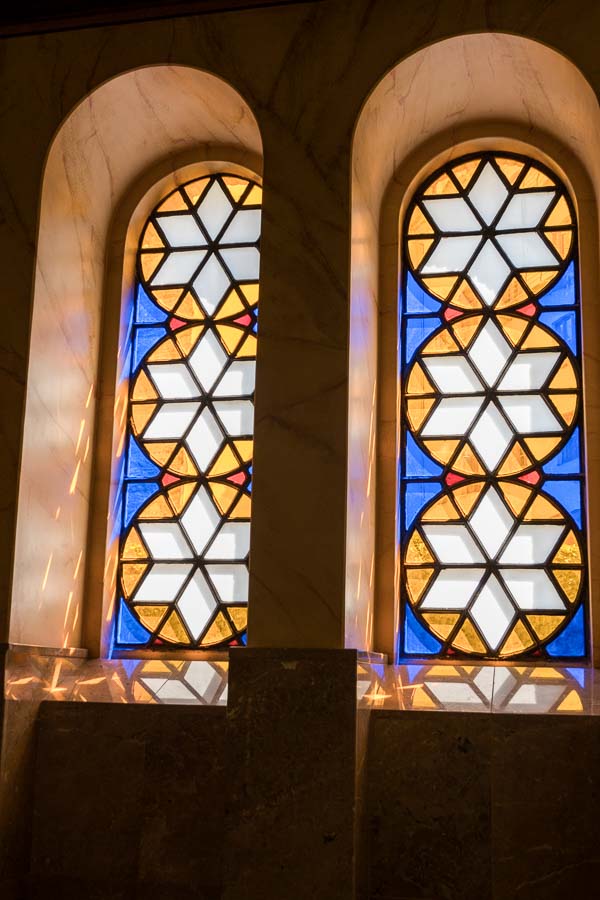
With a classic three-nave layout, its vast interior is more like a cathedral than a traditional synagogue. Unusually, there’s an organ and the Ark of the Covenant sits on an altar.
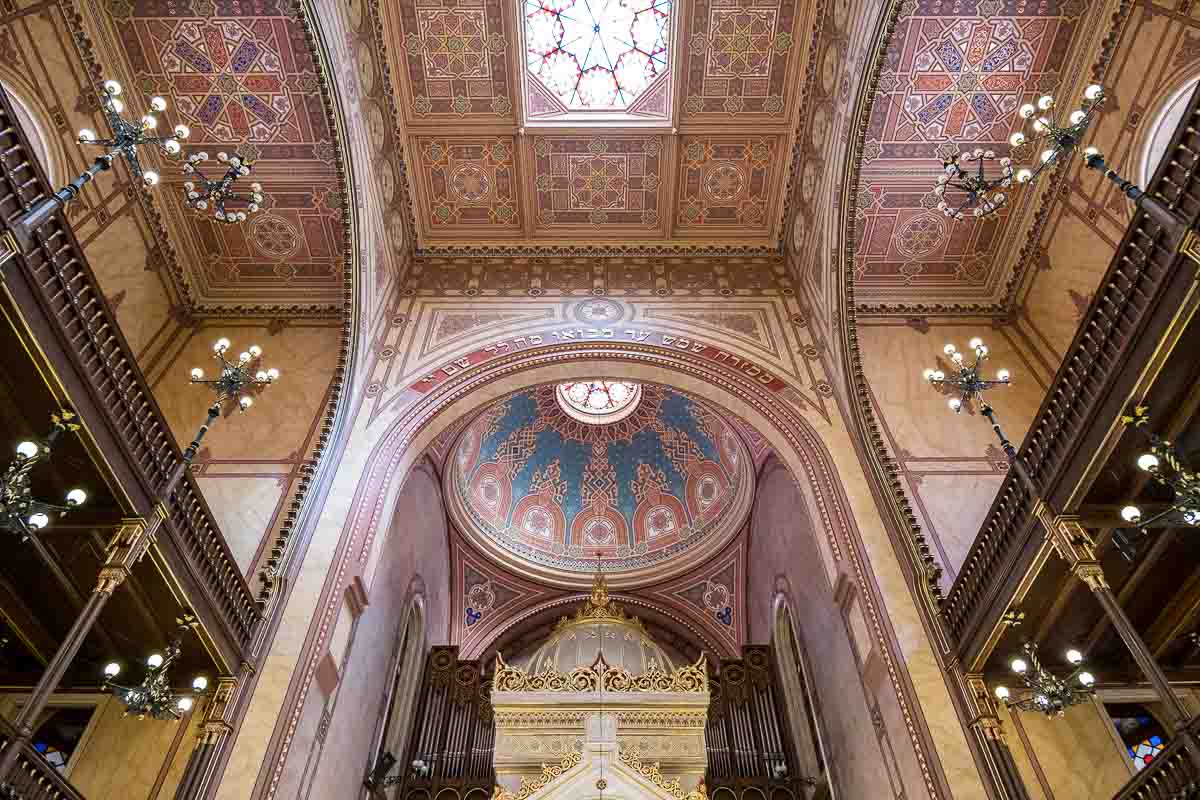
Dohány Street Synagogue’s architectural style speaks of the Jewish population’s desire to integrate
This architectural hybrid was no accident.
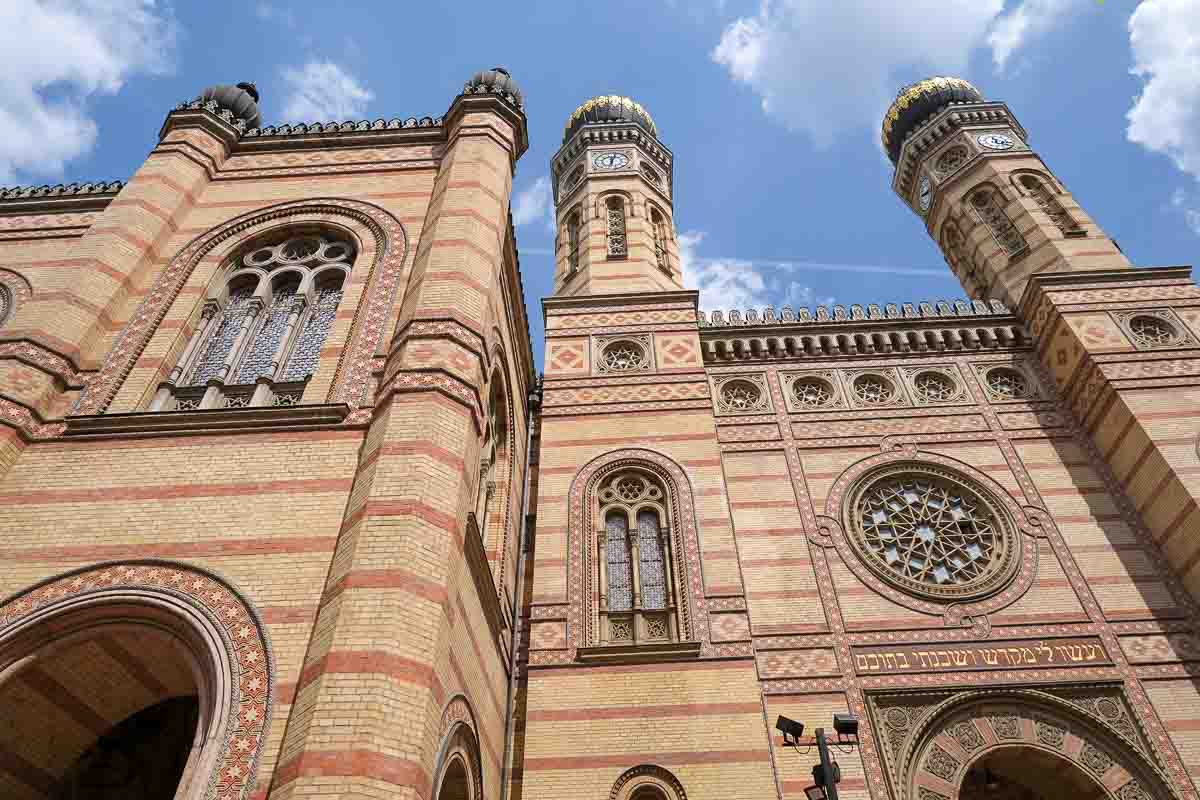
The design of the Great Synagogue attests to the patriotism of the Neolog faction of Budapest’s Jewry and their strong desire to integrate their culture into that of Hungary. For instance; the synagogue’s brickwork’s red, yellow and blue colours match those in Budapest’s coat of arms.
This desire for assimilation in Hungarian society continues today. The Neologs practice a less conservative form of Judaism, allowing women to sit with men and organ music during ceremonies.
The synagogue is just one part of the Budapest Great Synagogue Complex
The Budapest Great Synagogue Complex is a place to both celebrate Jewish history and commemorate Budapest’s Jewish Holocaust victims.
In the cemetery, simple headstones mark the mass graves of the 2281 Jews who perished here in 1944. László Vágó and Ferenc Faragó designed it as a place of meditation.
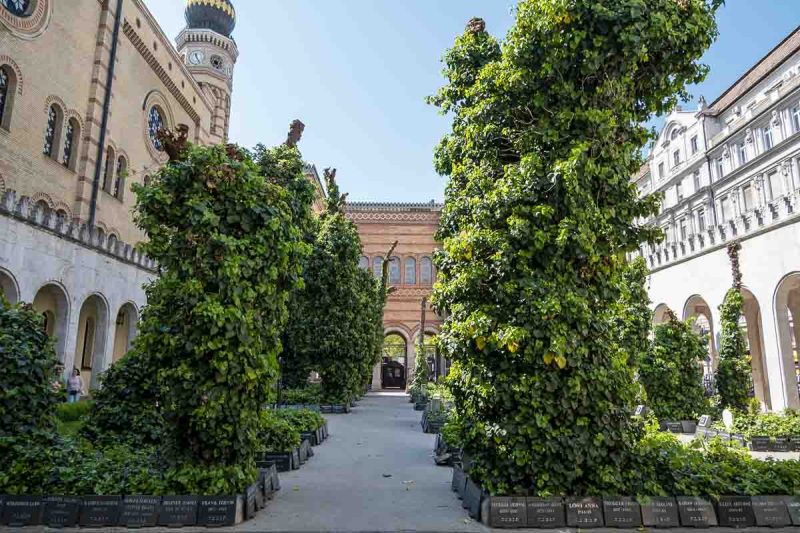
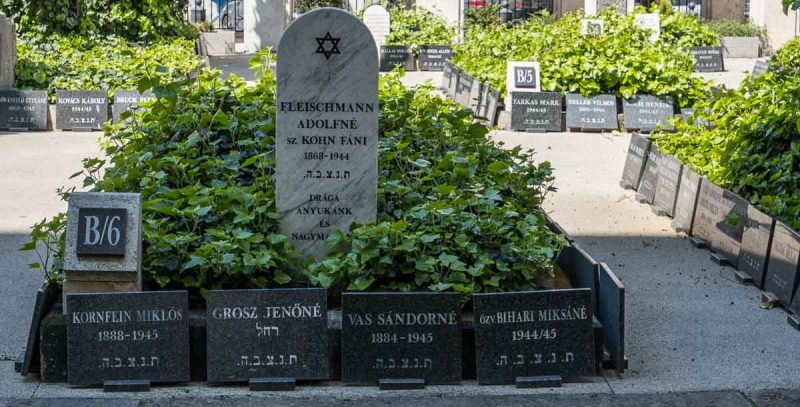
The domed Heroes’ Temple sits behind this courtyard. This was built between 1929 and 1931 to honour the 10,000 Jewish soldiers who died fighting for Hungary in World War I.
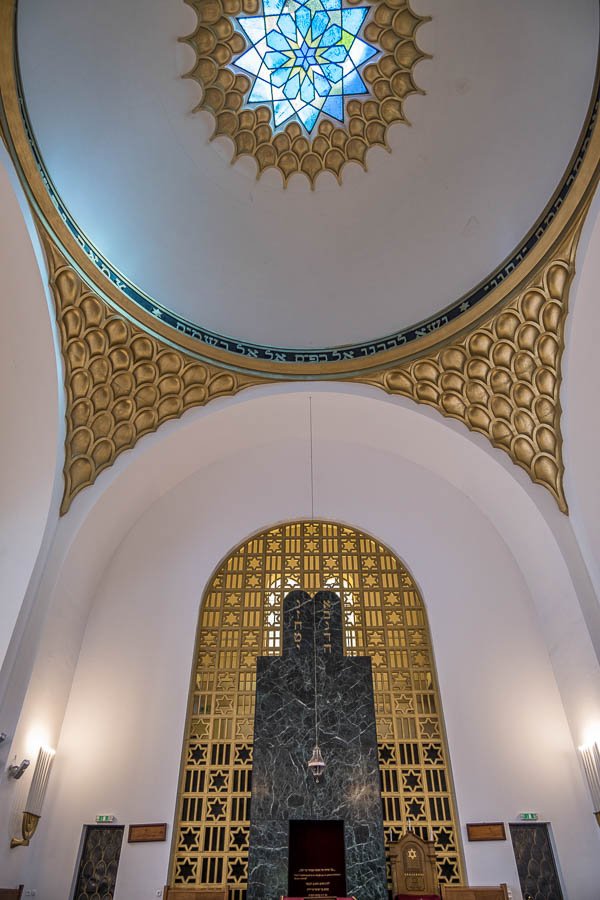
The complex’s Hungarian Jewish Museum is worth a quick look and is included in your admission ticket. There is information about Jewish culture and traditions and a fine display of Jewish artefacts, such as clothing, menorahs and jewellery.
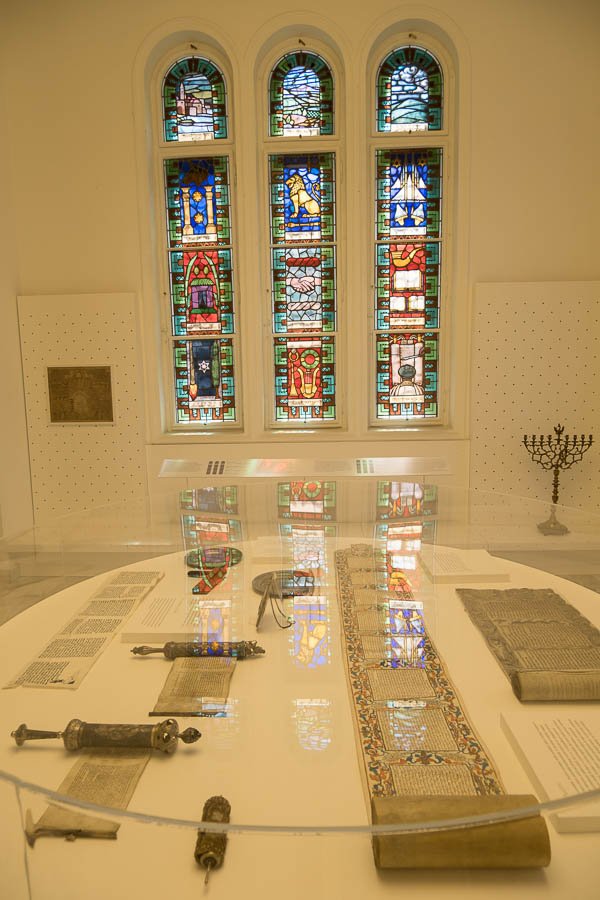
Finally, don’t miss the Raoul Wallenberg Holocaust Memorial Park in the rear courtyard. Shaped like an upside-down candle holder, the moving Tree of Life memorial has leaves engraved with Hungarian Jews who died in WWII.
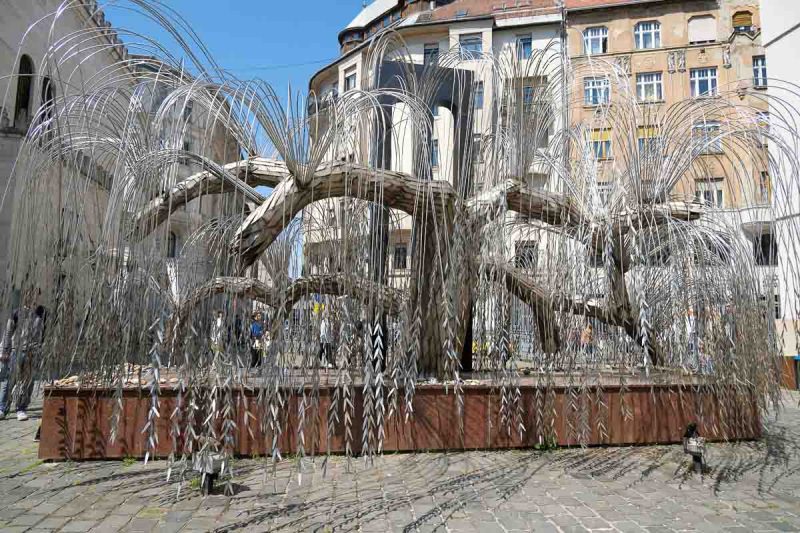

Echoing the memorial at Yad Vashem in Jerusalem, the Righteous Among the Nations Memorial commemorates the Hungarians who helped Jews evade the Nazis.
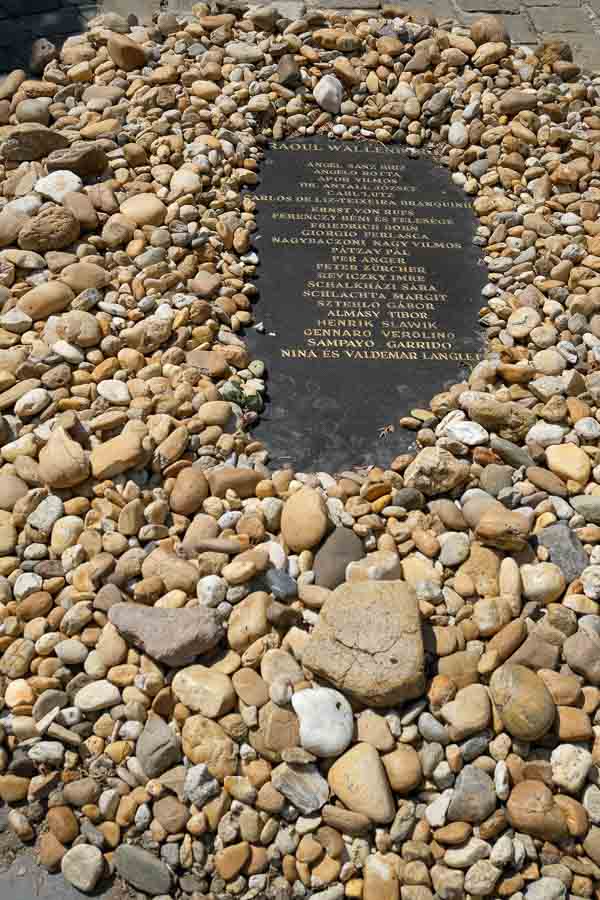
Visiting Dohány Street Synagogue: How to do it
GETTING THERE: The synagogue is located at Dohány utca 2 on the Pest side of the River Danube. The nearest metro and tram stations are Astoria, Blaha Lujza tér and Deák Ferenc tér.
OPENING HOURS: Dohány Street Synagogue is open from Sunday to Friday. You can check the seasonal opening hours here.
TICKET PRICE: In 2024, a ticket to visit the buildings and spaces in the Budapest Great Synagogue Complex costs 10,800 HUF. I bought my ticket at the ticket office but it’s worth buying a skip-the-line ticket at busy times of the year.
>>> BUY YOUR SKIP-THE-LINE TICKET HERE
Your ticket includes an excellent 45-minute guided tour. When I visited, there were English language tours every 30 minutes.
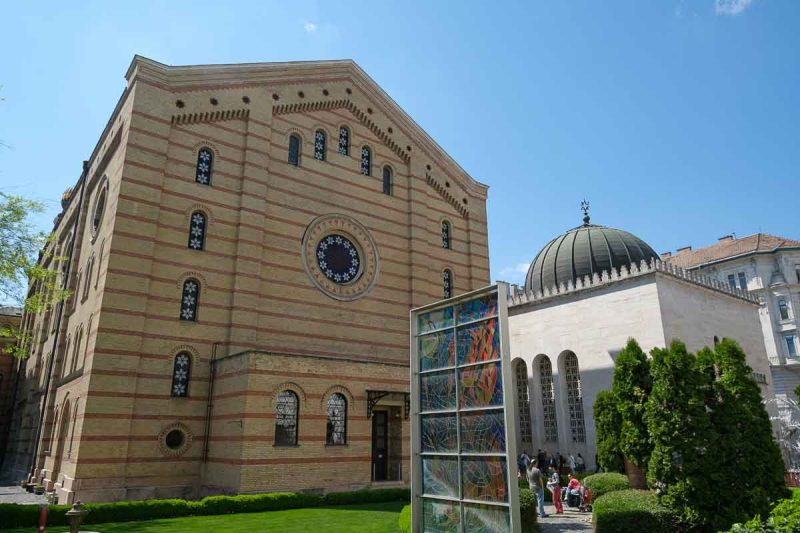
ESSENTIAL TIPS & INFORMATION
And That’s a Wrap!
I hope this article helps you plan a perfect visit to Budapest Great Synagogue. It is 100% worth the steep entrance fee.
I visited Budapest as a solo traveller on an Interrail trip through Central and Eastern Europe. If you have found this guide useful and need help with planning where to go next, take a look at some of my other guides:
AUSTRIA: Explore Mozart’s Salzburg and plan a festive break in Vienna. Discover Feldkirch, one of Austria’s hidden gems, and use it as a base to take a day trip to Vaduz in lovely Liechtenstein.
CZECHIA (CZECH REPUBLIC): Discover what to do in Brno. If wine tasting is your thing, visit these awesome vineyards near Brno.
SLOVAKIA: Discover what to do in Bratislava in a day. Visit Košice, Slovakia’s second city, and spend a day in Bardejov, a UNESCO gem.
Happy travels!

About Bridget
Bridget Coleman has been a passionate traveller for more than 30 years. She has visited 70+ countries, most as a solo traveller.
Articles on this site reflect her first-hand experiences.
To get in touch, email her at hello@theflashpacker.net or follow her on social media.
